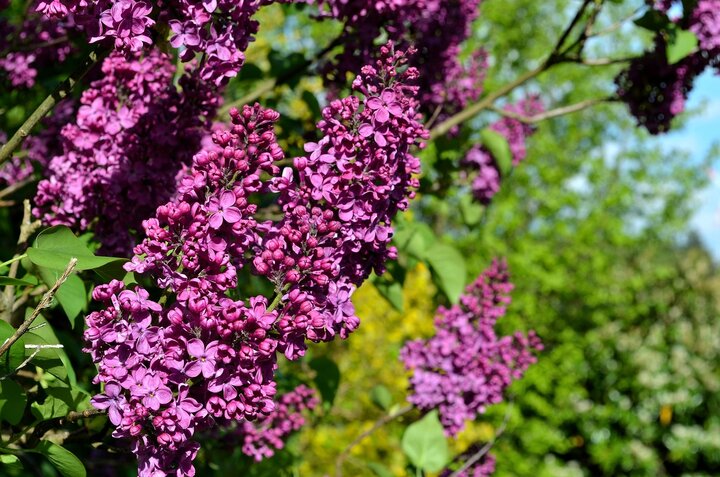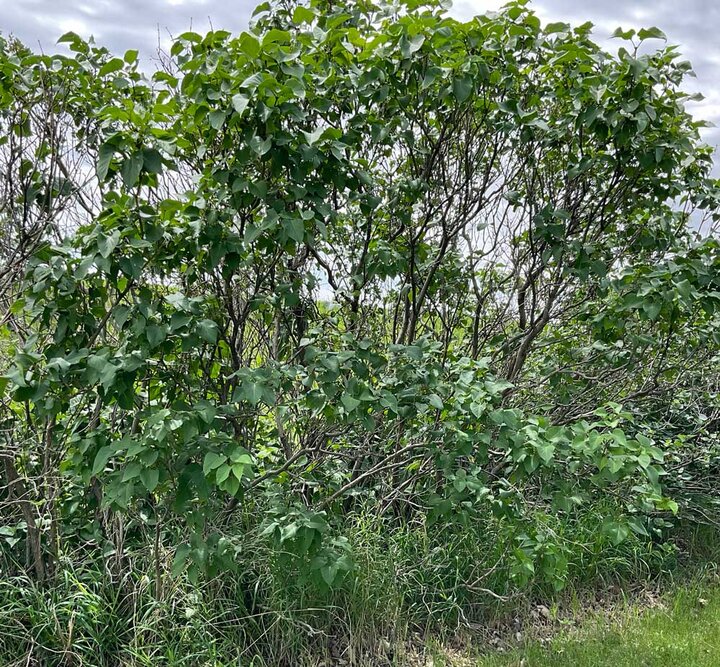Sarah Browning, Extension Educator

Pruning wounds heal fastest when the cuts are made right before new growth begins. Image from Pixabay.com.
Proper timing is one of the most important considerations for successful pruning. Getting the timing right helps ensure attractive, healthy, productive plants. Research has shown pruning wounds heal fastest when the cuts are made right before new growth begins. This knowledge guides pruning recommendations, with the goal of promoting fast wound closure and keeping plants as healthy as possible.
Let’s go through a quick rundown on the proper times to prune various woody plants in the yard and garden.

Deciduous Trees & Shrubs
Many deciduous trees and shrubs are planted in the home landscape for their attractive flowers. So, begin by deciding whether the plant has attractive flowers and when during the growing season those flowers appear.
Spring flowering trees and shrubs – like azalea, crabapple, dogwood, lilac, forsythia, magnolia, redbud, rhododendron, serviceberry, viburnum, weigelia - bloom early on the previous season’s growth. If only light maintenance pruning is needed, then prune immediately after bloom. Pruning at this time allows gardeners to enjoy the spring flower display and gives adequate time to initiate flower buds for next season. Maintenance pruning includes light shaping; removal of suckers or watersprouts; or removal of rubbing branches.
Non-blooming trees and summer flowering shrubs - beautyberry, potentilla, roses and many spireas - bloom on the current year's growth. Prune these in late winter or early spring - late March through early April. Summer-flowering shrubs pruned at this time will still bloom in summer.
Some trees, such as maples and birches, bleed sap heavily when pruned in late winter or early spring. The heavy sap leakage, however, doesn't harm the trees. The flow of sap will gradually slow and stop.
Non-blooming deciduous shrubs – Some shrubs don't produce showy attractive flowers, like burning bush and privet. Instead, they are grown for their attractive bark, fruit, or fall leaf color. Often these plants are used for hedges. Ideally, heavy pruning is done in late winter or early spring before growth begins, but they can be pruned in mid-summer, too. However, avoid pruning hedges during very hot, dry weather which often occurs in July and August.
Don't prune deciduous shrubs in late summer. Late August or early September pruning may encourage a late flush of growth, which often does not have enough time to harden off sufficiently before the arrival of cold weather making it susceptible to cold temperature injury.
Oaks – To minimize the potential for oak wilt infections, avoid pruning from April through June. Ideally trees should be prune from early to late March.

Old, neglected shrubs – Heavily overgrown shrubs often require extensive pruning to rejuvenate or renew the plants. The best time to rejuvenate large, overgrown shrubs is late winter or early spring (March or early April). While heavy pruning at this time will reduce or eliminate the flower display for a few years, the long-term health of the shrubs is more important.
Dead branches can be removed at any time during the growing season.
Evergreen Shrubs
The ideal time to prune evergreen shrubs, such as juniper and yew, is late March to mid-April before new growth begins. Light pruning may also be done in late June or early July. Do not prune from August through early October. Once plants are fully dormant, and the possibility of new growth following pruning is past, pruning can also be done in November and December but this is less desirable than early spring pruning.
Fruit Trees
The best time to prune fruit trees is from late February to early April. Start with the most cold hardy trees first and save the most tender for last. Fruit tree pruning wounds also heal more quickly when the pruning is done as close to the start of spring growth as possible. Fruit trees pruned in fall or early winter may be susceptible to winter injury.
Fruit tree cold hardiness, from most hardy to least, is pear, apple, apricot, tart cherry, sweet cherry, plum, peach, nectarine. Plan fruit tree pruning in that order.
More information: Pruning Fruit Trees.
Grapes
Prune grapevines from late February through early April. Vines will often bleed sap heavily from the pruning wounds. The sap loss, however, is not a problem for plant health.
More information: Grape Growing for the Home Garden.
Raspberries
One crop raspberries - pruned after harvest is done to remove all of the current year’s fruiting canes. Remove them as close to the ground as possible.
Everbearing raspberries managed for one large crop – prune all canes in fall or late winter (early to mid-March) while the ground is frozen and before new growth has begun. Using hand pruners, rotary mower, or other mechanical device, remove all above ground growth leaving a 1- to 2-inch stub for each cane. In August or early September, fruiting will occur on the current season's growth.
More information: Growing Raspberries.
Images
- Spring flowering shrubs like lilac should be pruned right after they are done blooming. Image from Pixabay.com.
- The best time to rejuvenate large, overgrown shrubs, like this lilac, is late winter or early spring (March or early April). Image by Sarah Browning, Nebraska Extension.
Search Our Archive
Associated Video
Pruning Spring Flowering Shrubs
Nebraska Extension Landscape Horticulture Specialist Kim Todd talks about the timing and technique of pruning spring flowering shrubs. Apr 20, 2024